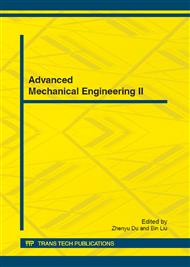p.401
p.406
p.415
p.420
p.425
p.430
p.435
p.440
p.445
Study of Oceanic Suspended Particles Density Detecting Technology Based on Mie Scattering Theory
Abstract:
A new technology about ocean suspended particles density detecting by Mie scattering theory is proposed. This technology is based on analyzing and studying the transmission characteristics of the laser in the seawater. Based on Mie scattering theory, the optical scattering characteristics of oceanic suspended particles is researched, and a new method of calculating the scattering coefficient and backward scattering ratio is putted forward. By detecting the laser scattering signal under the seawater, the density information of ocean suspended particles can be gain and detect. A ocean suspended particles density detecting model based on airborne lidar system is firstly established through analyzing the absorbing and scattering characteristics of the suspended particles. By simulating and calculating, it is proved that the technology can detect and monitor the density of ocean suspended particles effectively, and therefore it can predict the density change of ocean suspended particles also.
Info:
Periodical:
Pages:
425-429
Citation:
Online since:
July 2012
Authors:
Price:
Сopyright:
© 2012 Trans Tech Publications Ltd. All Rights Reserved
Share:
Citation:


